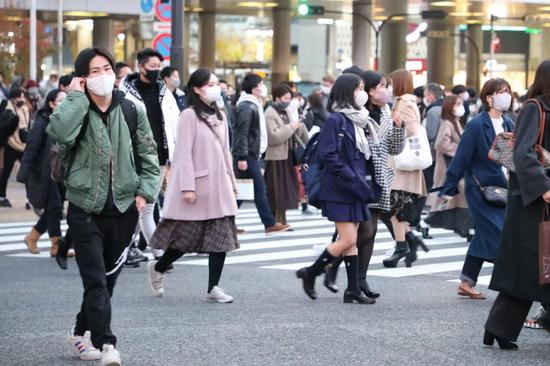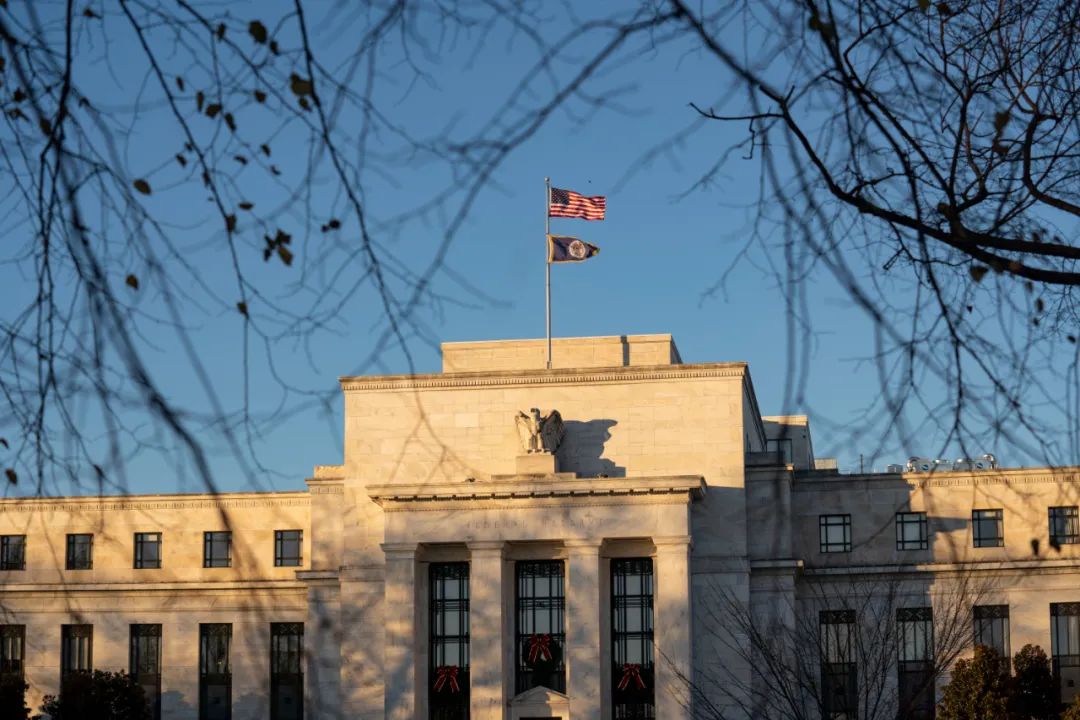In 2020, the sudden outbreak of COVID-19 has caused mankind to experience the worst infectious disease pandemic in a hundred years. The already fragile world economy is in recession, and trade and investment have fallen sharply, affecting more than the 2008 international financial crisis.
At the beginning of the outbreak of the epidemic, the economies of all over the world were generally severely impacted. Laurence Boehner, chief economist of the Organization for Economic Cooperation and Development (OECD), once described its severity as “the world is experiencing the largest recession since World War II”.
Entering the third quarter, global trade gradually resumed, container throughput and manufacturing export orders began to increase, and the world economy showed a recovery momentum. However, due to the different epidemic prevention and control effects in different countries and regions, the recovery of various countries and regions has shown a trend of differentiation.
China has made significant achievements in coordinating epidemic prevention and control and economic and social development, becoming the only major economy in the world to achieve positive growth in 2020.
After the relaxation of the blockade control measures, the United States, Japan, Europe and other countries gradually resumed work and production.
In addition, the stimulus measures have worked, and supply and demand have rebounded. However, the epidemic still repeatedly disturbs the economic recovery process, and the negative impact is far from being eliminated.
The vast majority of emerging economies and developing countries still face serious problems, including inadequate public health systems, weak economic foundations, and high debt pressure.
Since the epidemic has not been effectively controlled globally, the epidemic situation in various countries, people’s compliance with epidemic prevention and control, government policy strength, consumer and business confidence have all had an impact on economic recovery.
Looking forward to 2021, the world economy is expected to slowly recover from the epidemic. It must be emphasized that strengthening global cooperation and restoring confidence are key to promoting the recovery of the world economy.
United States: The economy has cooled sharply
Perhaps many years later, 2020 will be recorded as a “year of sharp cooling”, even if not regarded as the beginning of the prosperity and decline of the U.S. economic power.
In December 2019, the unemployment rate in the United States remained at a 50-year low of 3.5%, achieving 10 consecutive years of employment growth. The U.S. economy entered the new year with steady growth. Three months later, the painting style suddenly changed. With the spread of the COVID-19 epidemic, the U.S. economy almost shut down, and most industries were shut down.
In April, the U.S. economy fell into further crisis, with unemployment reaching 20.5 million, and the unemployment rate soared to 14.7%, the highest since the Great Depression in the 1930s.
With the overall shutdown, the Federal Reserve has rushed to launch a series of measures to try to stabilize the U.S. economy. After an emergency interest rate cut of 50 basis points, the federal funds rate level was quickly lowered to near zero, and then several loan support programs were launched.
When U.S. debt was sold off by other countries, the banknote printing machine was widely opened, and the Federal Reserve’s balance sheet was expanded from $4 trillion to $7 trillion within a few months, tacitly. The deficit is now monetized. As we approach 2021, the total amount of U.S. Treasury bonds has exceeded $27 trillion.
The sky-high printing of banknotes has made the U.S. property market extremely hot. The situation of more money and less housing is difficult to alleviate.
Reports show that the number of houses for sale has fallen to an all-time low, and housing prices have climbed to an all-time high. With the support of the Federal Reserve, the rich took the opportunity to buy real estate, while companies rushed to issue bonds, setting a record high. Buying assets means selling dollars.
This popular green ticket in the world for many years is facing pressure to continue to decline.
Citigroup predicts that the dollar may fall another 20% in 2021 as foreign investors take action to protect their existing U.S. assets from exchange rate fluctuations.
Analysis suggests that these factors will suppress the dollar due to the overvaluation of the U.S. stock market, the failure of interest rates to follow inflation, and the recovery of global economic growth. Investors may sell U.S. assets to buy other assets.
The long epidemic has further bleaked the employment prospects in the United States. According to data released by the U.S. Department of Labor, the number of new jobs in November was 245,000, the slowest recovery so far.
With the wave of unemployment, household consumption in the United States is sluggish. During the epidemic, the decrease in passenger flow in physical stores offset the impact of the increase in online shopping.
There is no doubt that the United States will have a long and cold winter, and the sharp cooling of the U.S. economy is unstoppable.
EU: The recovery is long and tortuous
In 2020, the COVID-19 epidemic ravaged the world, and the European Union became the hardest hit area.
At the same time, the epidemic will aggravate the socio-economic problems of EU member states, increase contradictions and differences within the EU, and even threaten the process of EU unity and European integration.
The COVID-19 epidemic broke out in March, and most countries imposed lockdown measures from mid-to-late March to the end of April. As the epidemic spread, the European economy fell into a sharp recession.
The EU’s autumn economic forecast report released in November said that the euro zone economy will decline by 7.9% this year and start to recover next year.
The structural impact of the epidemic on the EU economy is far-reaching.
Such as rising government debt, increasing fiscal deficits, and weakening investment and consumer confidence will cause the EU economy to be depressed for a long time.
The biggest problem facing the European economy is unemployment.
A survey of nearly 2,200 companies in Germany, France and Italy found that if the situation continues to deteriorate, Europe will face a serious wave of bankruptcy in the next six months, and 10% of small and medium-sized enterprises will go bankrupt, which means that nearly 90 million people will lose their jobs.
In response to the impact of the COVID-19 epidemic on employment and the economy, eurozone member countries have generally implemented large-scale fiscal and financial expansion policies.
According to the data released by the International Monetary Fund, the eurozone fiscal deficit ratio is expected to rise to 7.5% this year, and the government debt ratio is expected to rise to 97.4%, both of which are record highs.
Under the pressure of the epidemic, the EU summit reached a 750 billion euro “recovery fund” rescue agreement after “marathon negotiations”, which has been called the strongest economic stimulus plan in EU history.
At the same time, the European Central Bank launched an emergency debt purchase plan, promising to defend the euro without restriction, assume the role of “liender of last resort”, and stabilize eurozone financial markets; the European Commission quickly loosened fiscal discipline and state subsidy policies, and used the EU’s existing budget to introduce rescue measures to stabilize employment.
Coupled with the €100 billion “Unemployment Risk Reduction Assistance in a State of Emergency” initiative of the European Commission, slightly calms doubts about the effectiveness of the EU’s ability to respond to the crisis and coordination mechanism.

How will the economic situation in Europe develop in the coming period?
First of all, the second wave of the epidemic blocked the recovery and increased uncertainty. The EU report predicts that the economies of the 19 countries in the euro area are expected to contract by 7.8% in 2020, and it is expected to grow by 4.2% and 3% in 2021 and 2022, respectively.
The economies of the 27 EU are expected to contract by 7.4% in 2020, and grow by 4.1% and 3% in 2021 and 2022, respectively.
Secondly, the EU deficit has grown significantly this year, and the fiscal deficit and public debt continue to widen. Among them, the government deficit ratio of the euro area will reach 8.8%, and the total debt of the euro area is expected to increase from 85.9% in 2019 to 101.7% in 2020.
Thirdly, the economic outlook of the EU is highly uncertain and there are downside risks. Of course, the EU recovery package may give the EU economy a greater impetus than expected.
The epidemic crisis and geopolitical games have also exposed the fragility of the EU to some extent. The epidemic has slowed down the EU’s reform plan, hit its economy, politics and society hard, and profoundly challenged its governance model and development philosophy.
At the same time, in the face of external pressure and challenges, the major European powers have also strengthened their determination to seek strategic autonomy.
Japan: Dealing with changes in difficulty
“Epidemic + Political Situation” is the true portrayal of Japan this year. Japanese people generally expect that the government can do three things well: control the epidemic as soon as possible, successfully host the Olympic Games, and the economy will really recover next year.
In August, former Japanese Prime Minister Shinzo Abe resigned early due to health reasons. Abe’s cabinet butler and Chief Cabinet Secretary Yoshihide Suga took over the “outition”, inheriting almost all the internal and external policies of the Abe government.
He continues to rely on financial easing and financial investment to control the epidemic and stabilize the economy economically, and at the same time to solve the problem of young children. The social security problems caused by ageing seek solutions; politically, the Japanese government continues to have “no Abe’s policy”.
Following the Japan-Europe Economic Partnership Agreement (EPA), the Regional Comprehensive Economic Partnership Agreement (RCEP) with which three major Asian economies are participating in China, Japan and South Korea was officially signed, bringing new hope for expanding international economic cooperation.
At present, Japan’s domestic economic situation is very difficult. With GDP falling by 2.2% month-on-month in the first quarter, GDP decreased by 28.1% and 22.9% in the second and third quarters, respectively.
Japan’s economy, which has just begun to recover in the fourth quarter, encountered a new wave of epidemic, and the situation is tight again. According to the latest report of the Japanese government on December 18, the economic growth rate is expected to be -5.2% in 2020.

The fiscal measures of the Japanese government and the financial policies of the central bank have slowed down the economic downturn to some extent.
The Japanese government has avoided large-scale enterprise closures and employee unemployment by maintaining operating subsidies, rent subsidies, working capital loans for small and medium-sized enterprises, and raising the standard of closure subsidies for employees, laying the foundation for the economic recovery after the epidemic in a sense.
However, Japan’s economy is still “scarred” and the employment situation is still grim.
In addition, the three largest supplementary budgets in history have caused a huge fiscal deficit burden. According to the estimates of the International Monetary Fund, by the end of this year, the debt balance of the Japanese government was 2.66 times that of GDP, and Japan’s fiscal balance target was becoming far away.
While maintaining the negative interest rate policy of short-term finance and lowering the target curve of long-term treasury bond yield, the Bank of Japan has expanded its capital injection into the market.
Focusing on the structural transformation of the economy in the post-epidemic era, Yoshihide Suga government regards the digital economy and energy conservation and emission reduction as new momentum to lead economic development.
In addition, the Japanese government has decided to compile the third supplementary budget of this year with next year’s budget to accelerate the recovery of the economy through a large budget of 15 months.
The Bank of Japan also decided to extend its support plan for enterprises and local financial institutions, which was originally scheduled to expire at the end of March, until September next year.
In particular, the Japanese government and Tokyo Olympic Organizing Committee are determined to overcome all difficulties and promote the postponement of the Tokyo Olympic Games for one year, which is expected to promote the V-shaped recovery of the Japanese economy next year.



